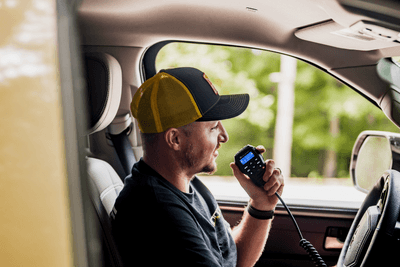Midland Breaks Down Two-Way Radio Etiquette

Table of Contents
Whether you're on the trails, the farm, slopes, or in the RV, two-way radios provide useful communication as you push the limits and explore off-grid.
But you're not the only one using two-way radios to communicate and others not in your group might be on the same channel. That's why it's so important that you're being respectful of others.
Two-way radio communication is unique and to help you navigate, we've put some some two-way radio etiquette.
BASIC ETIQUETTE
- Learn the lingo
- Pause before you speak
- Identify yourself
- Keep communication short and to the point
- Learn the NATO alphabet
- Speak in a clear tone
- Don't interrupt others
- Don't transmit sensitive, confidential, financial information
TWO-WAY RADIO LINGO
Here are a few key terms in two-way radio lingo you can use to transmit to keep things short and to the point.
Affirmative- Yes
Negative- No
Over- Finished speaking, lets other party know they can speak
Out- The conversation is finished and others can use the channel
Roger- Message understood
Go Ahead- Resume transmission
Say Again- Repeat the message
Stand by- Please wait
Wilco- I'll follow the instructions
STANDARD NATO ALPHABET
When you're needing to spell out letters over the radio, there's a specific alphabet to follow. Many use the alphabet to spell out a name, location, code, etc. It can be easy to mishear something on the radio, so the NATO Alphabet comes in handy.
A- Alpha
B- Bravo
C- Charlie
D- Delta
E- Echo
F- Foxtrot
G- Golf
H- Hotel
I- India
J- Juliet
K- Kilo
L- Lima
M- Mike
N- November
O- Oscar
P- Papa
Q- Quebec
R- Romeo
S- Sierra
T- Tango
U- Uniform
V- Victor
W- Whiskey
X- X-ray
Y- Yankee
Z- Zulu




